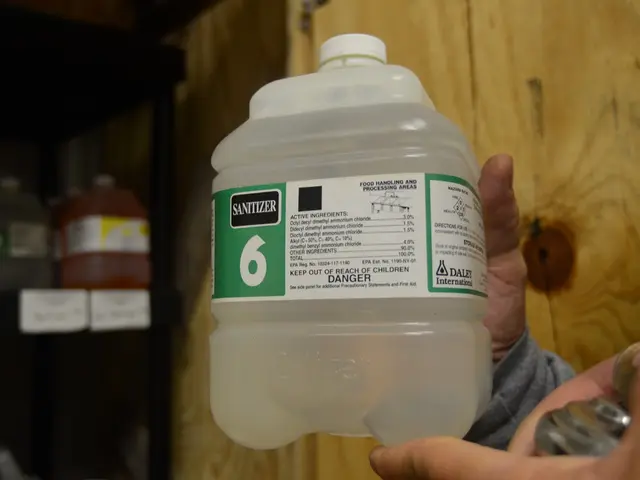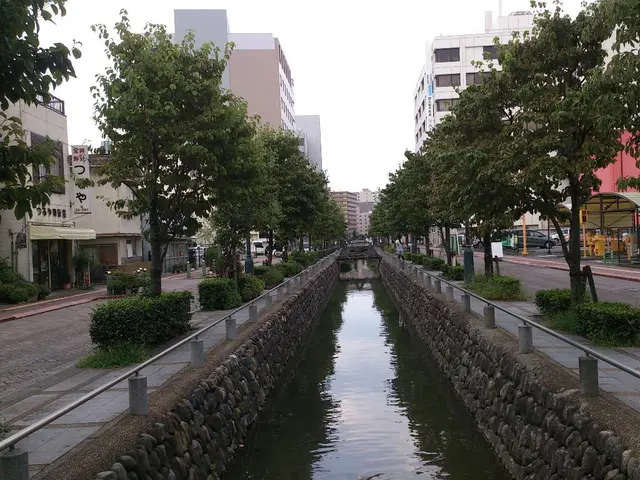Summer Heat Stress: A City-by-City Breakdown!
Current heat stress conditions in your urban environment, visualized on this map. - What is the current temperature in your locale?
Looking for a heat stress map of your city? The German Environmental Aid (DUH) has got you covered! Their "Heat Impact Index" assesses 190 cities (over 50,000 residents) based on factors like temperature, sealing, and greenery to pinpoint heat-stressed areas accurately.
The cities wearing the heat stress crown are in the south, with Mannheim, Ludwigshafen, and Worms leading the unfortunate list – all with 88 to 91% residents living in severely affected zones. On the brighter side, cities in the north such as Flensburg, Wilhelmshaven, and Kiel fare better, thanks to lower temperatures during summer. However, Hattingen, Gummersbach, and Witten take the cake for offering relative greenery and fewer sealed surfaces.
Here's a quick rundown:
- Heat Stress Capitals: Southern cities like Mannheim, Ludwigshafen, and Worms experience the highest heat stress (88-91% residents)
- Cool Cities: Northern cities like Flensburg, Wilhelmshaven, and Kiel enjoy lower temperatures during summer
- Green Spaces: Hattingen, Gummersbach, and Witten offer the most greenery and fewest sealed surfaces
Where's the Heat Hottest?
DUH has tagged 31 cities as "red" (extremely heat-stressed)—including Frankfurt am Main and Magdeburg. Cities like Cologne, Berlin, and Munich fall into the "yellow" category (moderately heat-stressed). Hamburg, on the other hand, is considered "green" (relatively resilient).
DUH partnered with Luftbild Environmental Planning GmbH to grid the country into 1kmx1km squares, judging each one's surface temperature, sealing, greenery, and population density based on satellite data and census data from 2022. For this study, they've advanced their previously published heat check by incorporating data on summer average surface temperature and population density[1].
Why Concrete and Green Matter
Sealed surfaces such as roads and parking lots trap heat and release it over extended periods, causing urban areas to swelter. Green spaces, including meadows, hedges, and trees, help combat this by promoting evaporation that offers cooling effects. Trees have an exceptional impact on heat relief—lowering temperatures by up to 10°C according to the Ministry of Construction's heat protection strategy! Open water bodies further contribute to cooling[1].
What Politicians Can Do About Heat Stress
City planners can make life a breeze even during hot temperatures by implementing concepts like the "sponge city," which allows water to seep into the ground and stay, beneficial for managing heavy rain and dry spells. Green roofs and facades, parks, and trees boost evaporation. Cool air corridors bring cooler air from the surroundings into the cities. Drinking water fountains provide a refreshing pause on scorching days[1].
- Heat
- Weather
- German Environmental Aid e.V.
[1] German Environmental Aid's Heat Impact Index Report (Link)[2] Climate Monitoring Data (Link)[3] Ministry of Construction's Heat Protection Strategy (Link)[4] DUH's Advanced Heat Check Report (Link)
- The German Environmental Aid's heat stress index, which analyses 190 cities, prioritizes policies that focus on environment-friendly solutions such as increasing greenery, managing concrete surfaces, and implementing concepts like the "sponge city" to combat heat stress.
- In light of the growing concern over environmental-science issues like climate-change and health-and-wellness, employing science-based community policies can play a significant role in creating resilient cities that are less susceptible to heat stress.








